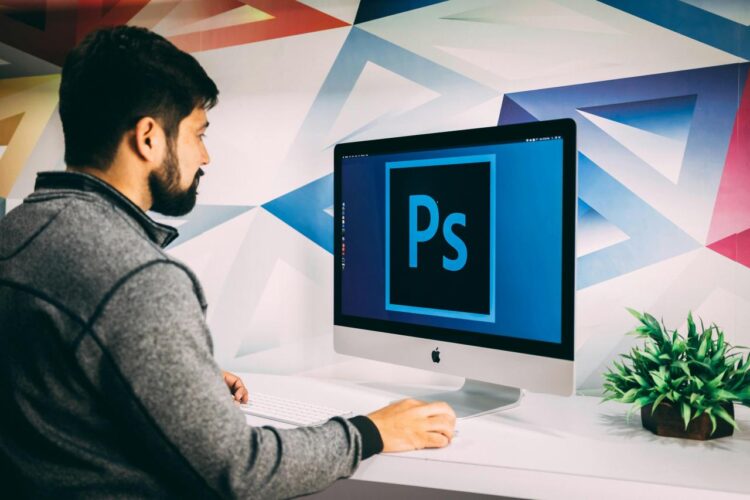In the modern digital landscape, the ability to create stunning visuals is the most critical asset for driving online engagement and generating revenue through avenues like Google AdSense. Effective graphic design is no longer a luxury—it is the technological engine for successful branding, content marketing, and user acquisition. For professionals, content creators, and businesses, selecting and mastering the right graphic design software is the core competency that separates visual mediocrity from digital dominance.
This definitive, over-2000-word guide meticulously dissects the complex technological, architectural, and workflow imperatives of the industry’s leading software solutions. We will analyze how these programs enable SEO-optimized content creation, explore the nuances of their rendering technologies, and detail the advanced techniques necessary to consistently produce visuals that not only look stunning but are technically optimized for maximum online performance and search engine visibility.
I. Foundational Architecture: The Raster vs. Vector Engine
Every graphic design task begins with a fundamental decision rooted in software architecture: whether to use a Raster (pixel-based) or Vector (math-based) engine. This choice dictates the file’s scalability, performance, and application in the digital and print worlds.
A. Raster Imaging Technology: Mastering the Pixel
Raster graphics, central to photo editing and digital painting, operate on a fixed grid of individual color points (pixels). Software like Adobe Photoshop is built to manipulate this pixel-level data with surgical precision.
- Resolution Dependence and Interpolation:A. The Fixed Data Constraint: A raster image’s quality is permanently defined by its initial resolution (e.g., 4000×3000 pixels). The software stores color information for every single pixel in this grid.B. Scaling Failure: When a raster image is significantly enlarged, the software must execute interpolation—a process of estimating and synthesizing new pixel data to fill the void. This results in the characteristic blurring and pixellation, making raster images unsuitable for universally scalable brand elements like logos.
C. High Bit Depth Processing: Raster editors excel at managing high bit depth (e.g., 16-bit or 32-bit color per channel). This allows for trillions of color variations, enabling the smooth tonal transitions and subtle color grading necessary for truly stunning, photo-realistic visuals.
- Resource-Intensive Processing and GPU Acceleration:A. CPU/RAM Demands: Manipulating large, multi-layered raster files is highly taxing on the CPU (Central Processing Unit) and RAM (Random Access Memory). Tasks like applying complex filters or compositing large images require the system to process billions of calculations instantly.B. The Role of the GPU: Modern raster software, such as Adobe Photoshop, heavily relies on the GPU (Graphics Processing Unit) and specialized APIs (like CUDA or OpenCL) for hardware acceleration. This offloads resource-heavy calculations like 3D transformations, certain filters, and real-time preview rendering, ensuring a fluid, professional workflow.
C. Non-Destructive Editing: Professional mastery of raster technology involves leveraging Smart Objects and Adjustment Layers. These technical features preserve the original pixel data, applying all edits as non-permanent, reversible data sets. This flexibility is essential for client revisions and long-term asset management.
B. Vector Technology: Precision Through Mathematics
Vector graphics, created in applications like Adobe Illustrator and Affinity Designer, are defined by mathematical equations describing points, paths, and curves (Bézier curves). This architecture is the technical requirement for precision and scalability.
- Resolution Independence and Scalability:A. Mathematical Definition: A vector object is defined by an equation (e.g., a line between coordinates X and Y). To scale the object, the software simply recalculates the coordinates, maintaining perfect sharpness and clarity at any size. This makes vector graphics the gold standard for brand identity and any visual that must appear stunning across all media—from a small favicon to a stadium screen.B. File Compactness (SEO Advantage): Vector files (e.g., SVG, AI, EPS) are significantly smaller than equivalent raster files because they store lines of code instead of millions of pixel color values. The SVG format, in particular, is highly SEO-friendly due to its small size and text-based nature.
C. Path Editing Mastery: The core skill is the manipulation of Anchor Points and Direction Handles via tools like the Pen Tool and Curvature Tool. This allows designers to achieve geometric accuracy and fluid, organic shapes necessary for high-end illustration and logo work.
- Advanced Typography and Production:A. Type Conversion: Vector software allows text to be converted to outlines (paths), turning the typography itself into a fully editable piece of the vector artwork. This is essential for logo design and creating unique, custom-lettered visuals.B. Print Prepress: Vector programs handle essential print requirements, including CMYK color modes, spot color definitions (like Pantone), and accurate imposition of graphic elements, ensuring the visual output meets commercial printing standards.
II. The Modern Ecosystem: Specialization and Collaboration Tools
The contemporary design landscape mandates specialized tools for specific outputs, particularly for collaborative teams and digital interface design.
A. UI/UX Design and Cloud-Native Platforms
Interface design (User Interface/User Experience) requires tools built for real-time collaboration, prototyping, and developer handoff, shifting the technical focus from individual desktop performance to network synchronization.
- Figma’s Real-Time Architecture:A. Shared Document Model: Figma operates on a web-native, cloud-based architecture. Its core innovation is a multi-user synchronization engine that allows multiple collaborators to edit the same design file simultaneously, eliminating version control problems and fostering a truly agile workflow for creating stunning app and website interfaces.B. Component-Driven Design Systems: Figma utilizes Components—master elements that, when edited, instantly update all linked instances across the entire project. This technical feature is the backbone of Design Systems, ensuring visual consistency across thousands of screens—a crucial factor in scaling digital products.
C. Integrated Prototyping: These tools (Figma, Adobe XD) include built-in prototyping engines that simulate user interactions (transitions, animations, clicks) without coding, allowing designers to present functional, stunning user flows directly from the design file.
- Handoff and Developer Integration:A. Code Generation: UI/UX software automatically generates design specifications for developers, including exact measurements, spacing, font specifications, and often CSS snippets, accelerating the transfer of the stunning visual design into functioning code.
B. The Accessibility Engine: Template-Driven Simplicity
Tools like Canva are technological disruptors that prioritize user accessibility and speed over raw processing power, making design easy for content creators focused on high-volume output.
- Simplified Drag-and-Drop UI:A. Content Velocity: Canva’s success lies in its vast, centrally managed library of pre-designed templates, fonts, and assets. This structure allows users to create professional-looking visuals in minutes—a critical need for social media marketing, where the ability to publish content quickly is directly tied to AdSense exposure and audience engagement.B. The Automation Advantage: Features like Magic Resize use algorithms to intelligently crop and rearrange elements to fit multiple social media dimensions (e.g., Instagram, Pinterest, Facebook) simultaneously. This mass-production capability is vital for maximizing visual reach across all platforms.
C. Bridging the Skill Gap: Canva abstracts away the complexity of professional software, handling technical details like color modes, resolution, and bleed marks behind a simplified interface, empowering non-designers to create high-quality, stunning visuals on demand.
III. Technical Workflow: SEO and AdSense Optimization
For visuals to be truly successful, they must be technically optimized for web performance, search engine indexing, and user engagement—the cornerstones of profitable online content.
A. Image Optimization for Search Engine Ranking
Google prioritizes fast-loading websites. Unoptimized, large graphic files are the primary cause of slow Page Speed, which directly lowers a site’s SEO ranking.
- Lossless Compression Strategies:A. Format Choice: Designers must select the most efficient file format. WebP often provides superior compression ratios compared to older JPEGs, significantly reducing file size without noticeable loss of visual quality. For transparent backgrounds, optimized PNG or SVG (for vector icons) are mandatory.B. Compression Software: Using dedicated image compression utilities (often external to the main design software) is necessary to reduce file size further, stripping away unnecessary metadata while maintaining visual integrity.
- Indexing and Discoverability:A. Descriptive File Naming: Search engines crawl file names. Every visual should have a descriptive, keyword-rich file name (e.g., best-vector-design-software.webp) rather than generic names (e.g., image001.jpg).B. Alt Text Implementation: Alt Text is the crucial SEO metadata that describes the image to search engines and visually impaired users. It must be written concisely and include relevant keywords that align with the article’s topic, driving traffic through Google Image Search.
C. Schema Markup for Visuals: Advanced SEO techniques involve using Schema Markup to provide structured data about the image (e.g., telling Google it’s a photograph, a logo, or an infographic), increasing its chances of appearing as a rich snippet in search results.
B. AdSense and User Engagement Factors
Visually stunning, technically fast graphics directly contribute to higher user engagement, which is essential for maximizing AdSense revenue and SEO signals (like reduced bounce rate).
- Mobile-First Responsiveness:A. Adaptive Design: Visual assets must be designed to adapt seamlessly to all screen sizes. This involves using relative units (percentages, viewport width) in CSS and ensuring raster images are properly scaled and served using responsive image tags (srcset and sizes) to load appropriate versions for mobile devices, which are critical for engagement.B. Above-the-Fold Optimization: The most visually compelling, stunning graphics should load instantly “above the fold” (the initial visible screen area) to immediately captivate the user and prevent a quick exit (bounce).
- Visual Hierarchy and Conversion:A. Call-to-Action (CTA) Design: Graphics must guide the user’s eye towards important content, particularly AdSense blocks or conversion points. This is achieved through deliberate use of contrast, color, and visual hierarchy—all engineered within the design software.
IV. Advanced Techniques: Pushing Visual and Technical Boundaries
Mastery of graphic design software involves moving beyond basic tools to deploy complex, non-standard techniques that produce truly distinctive, stunning results.
A. High-End Raster Retouching
- Frequency Separation Technique:A. Detail vs. Color: This technique is a cornerstone of professional retouching in Photoshop. It separates an image into two layers based on frequency: a high-frequency layer (texture and fine detail) and a low-frequency layer (color and tone). This allows the designer to smooth skin or correct color imperfections on the low-frequency layer without destroying the natural pores and texture on the high-frequency layer, achieving a stunning, polished yet realistic look.B. Dodge and Burn with Curves: Advanced tonal adjustments are made non-destructively using Curves Adjustment Layers and careful masking to selectively lighten (dodge) or darken (burn) areas. This volumetric shaping of light and shadow creates depth and dramatic visual impact.
B. Complex Vector Illustration and $3\text{D}$ Integration
- Gradient Mesh Tool:A. Volumetric Shading: In Illustrator, the Gradient Mesh Tool allows the creation of a multi-point gradient network within a single shape, enabling complex, realistic, volumetric shading. This technique is used to create hyper-realistic vector icons and illustrations that appear 3D while maintaining vector scalability.B. Blends and Envelopes: Utilizing the Blend Tool to create smooth, calculated transitions between two or more shapes, and the Envelope Distort feature to warp vector objects according to a grid, allows for highly complex and visually stunning effects that defy simple path creation.
- 3D and Raster Compositing:A. Integration Workflows: The cutting edge of stunning visuals involves integrating rendered 3D models (created in software like Blender or Cinema 4D) into 2D raster compositions. This requires expertise in perspective matching, shadow casting, and color grading the 3D render to match the photographic plate perfectly.
V. System Requirements and Future Technology
Optimal performance for creating truly stunning visuals depends entirely on the technical specifications of the designer’s hardware and the future integration of AI.
A. Hardware Specifications for Performance
- Storage Technology:A. NVMe SSDs: Professional workflow dictates using NVMe Solid State Drives (SSDs) for both the operating system and the software’s Scratch Disk. The exceptionally fast read/write speeds of NVMe technology are vital for quickly accessing and saving large files and temporary data during intensive rendering operations.
- Display Calibration:A. Color Accuracy: Professional monitors must be calibrated to a specific color profile (sRGB for web, Adobe RGB for print). This ensures that the “stunning visual” seen on the screen accurately reflects the color that will be output in the final medium, eliminating costly errors.
B. The Future: Generative AI and Automation
- AI-Powered Asset Synthesis: Future graphic design software will increasingly incorporate Generative AI models that synthesize complex textures, patterns, and background elements from text prompts. This will shift the designer’s role from manual execution to high-level creative direction and prompt engineering.
- Automated Optimization: AI will automate SEO tasks within the design software, instantly suggesting optimal Alt Text, detecting visual areas that require compression, and automatically generating low-bandwidth versions of every asset upon export. This integration ensures that the visuals are not only stunning but are technically superior for the web environment.








